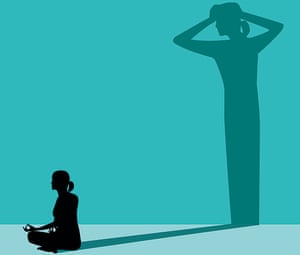Three questions with an unaffiliated neurotrauma consultant
Joyce Park stashed this in Brain injury
Stashed in: Football, Brain, TBI, Concussions
You will have to scroll down a bit (find the phrase "UNC") to see a short but quite illuminating interview with Dr Geoffrey Manley of UCSF, who serves as a sideline concussion judge for the Raiders.
Good read. Cutting and pasting here to avoid long scroll down next time.
Three questions with a UNCEven the most rabid NFL fans will say, in response to that header, “Why are you asking questions to a University of North Carolina?” This UNC stands for unaffiliated neurotrauma consultant. There are two of these at each NFL game, one on each sideline. They have the power to stop the game if they see a player struggling with what appears to be a head injury. They also can join the team physicians to examine a player on the sideline between plays or series, which could happen after an independent observer in the press box signals down to the sidelines to take a player off the field for an exam.
Geoffrey Manley is the chief of neurosurgery and co-director of the Brain and Spinal Injury Center at San Francisco General Hospital, and a professor of neurological surgery at the University of California at San Francisco. He has been one of the UNCs at Oakland Raiders games since the program began in 2013. Manley was selected by the NFL and NFL Players Association as one of the brain-trauma experts to analyze players at home games of teams throughout the league.
The MMQB: How exactly does the system work?
Manley: We get there about an hour before the game, and the [two] UNCs and the team medical personnel meet to introduce themselves. We give them our qualifications, since often it’s the first time meeting them. When the game starts, I stay at about the 35-yard-line, watching the game as closely as I can. We also have a video station on the sideline, where we can look at any play between plays. There is a radio system between the spotter upstairs and the sidelines. It’s not just looking at head-to-head contact on the field, but it could be a player’s head hitting the ground hard, or something we observe. During the game, we could get a call from the spotter. There’s been an open-field tackle with some head-to-head contact. So we go and look at the tape to see the hit. If we think the hit merits looking at the player, we will look at him—the team physician and me, together. Over the time I’ve been doing it, I’d estimate—and this is just a guess—that we look at two or three players a game. Last week we looked at a player who got what I would call a glancing blow to the head, but one worth looking at. He looked all right, but then we ask him questions. What quarter are we in? Who did you play last week? Questions like that. This player was very crisp with his answers, very with it. It was clear he had no wooziness. We didn’t feel the need to go back to the locker room to do the more thorough test and the balance test.
Of course, players want to play. Frequently there is resistance. The first response often is, “I gotta get back in the game.” If we think the player may have suffered some brain trauma, we will go to the locker room. We run through the cognitive tests for the player, then we do a balance test. They either pass the test or not. Sometimes I tell them if they are resistant, “If you twisted your knee, you wouldn’t feel good about going back in the game. When in doubt, you need to sit it out. You need to let your brain heal, just like you’d let your knee heal.”
The MMQB: In your time doing this, have you felt any subtle or overt pressure from teams to get a player back in the game?
Manley: I have never felt any pressure to keep a player in the game. I have been treated with the utmost respect. All I have felt is the teams are very proactive to do the right thing on the sidelines. I really have the ability to have a second opinion. Believe me, I wouldn’t do this if I felt I was being marginalized.
The MMQB: Do you feel this is helping the league get players off the field who would otherwise be staying on the field with a head injury?
Manley: I know the NFL gets a bad rap in this area, but I can tell you they’re trying really hard. Guys who come to the sideline get some of the best medical care that I see. For me, this has been a great experience as a physician. I have learned a tremendous amount about concussions and the assessment of concussions. We as physicians don’t do a very good job in assessing concussion. You can’t always tell just by asking a few questions. Here [on the sidelines] we do the cognitive test, and the baseline, and the balance test. I like the idea that we are unaffiliated.
* * *
I followed up with a question over the weekend, via email to Manley, about whether he has the power to keep a player out of the game if other medical authorities on-site disagree. In other words, can the UNC trump the other medics at the game?
“It is my understanding,” Manley wrote back, “and it has been my actual experience, that if I believe a player has had a concussion, they cannot return to game.”











10:23 PM Sep 22 2015